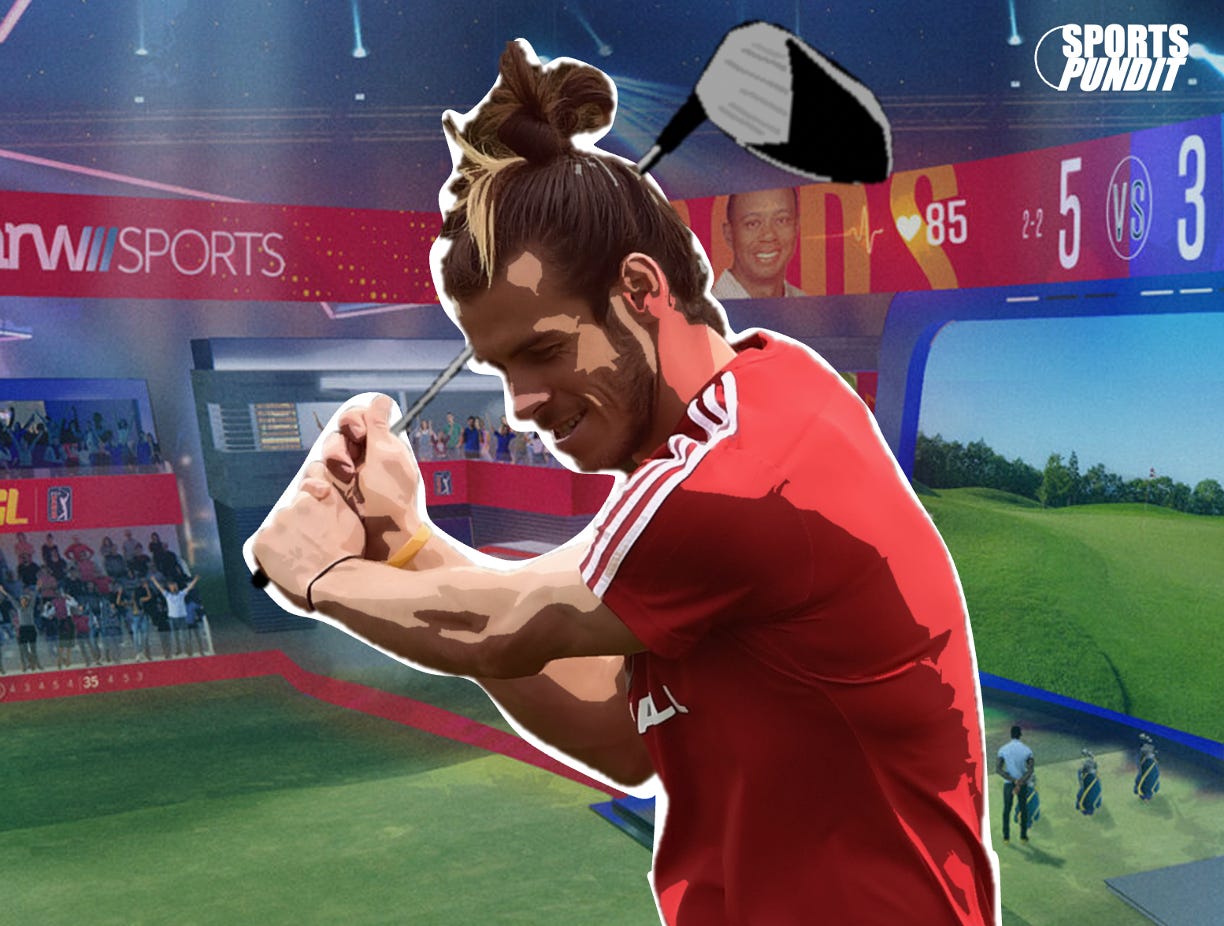Sport of TMRW: Two lessons from Bale’s World Cup workaround ⛳️
For Bale, so often a step ahead on the pitch, he appears to be equally so off it. His recent investment in TMRW Sports and his actions at the World Cup, point us towards two emerging trends
Not yet a subscriber? Join 1000+ sports business leaders from Fnatic to Formula 1 that read Sports Pundit every week to get impactful industry insights.
There are few things Gareth Bale can’t do.
5 Champions League titles, 4 Club World Cups, 3 European Super Cups and 3 LaLiga titles are all testament to that.
However, he was unable to continue in Wales final group game of the World Cup courtesy of a hamstring injury, and the talisman was also banned from letting rip on the golf course during his time in Qatar.
Unable to figure out a workaround for the first problem, he did find a solution to the second: instead of bringing himself to the golf course, he brought the golf course to him - installing a golf simulator at the Wales team compound.
Now, you might be wondering what that has to do with anything, but it does touch upon two very crucial trends emerging in 2022 and beyond:
1. Cross-Sport Collaboration
2. Going Phygital
Cross-Sport Collaboration
Bale is certainly not alone in his love of golf – a pastime that is particularly enjoyed by the athletic elite. Fuelled by a mix of wealth, competitiveness, and a lack of other activities permitted under their exorbitant contracts, footballers, Formula 1 drivers, basketballers, American footballers, and baseball players all enjoy the sport.
In fact, TMRW Sports, the business launching a Monday Night golf league with the backing of Tiger Woods and Rory McIlroy, has received investment from athletes in all of the above disciplines, opening up a ton of opportunity for cross-sport collaborations.


This is evident already through the likes of The Match, which ditched golfers entirely in its most recent edition. And we have also seen Ash Barty retire from tennis as World No. 1 and join the Icon Series, a disruptive golf tournament containing numerous team matchplay format events featuring athletic icons like Harry Kane, Yuvraj Singh, and Canelo Alvarez.
While golf is somewhat unique in its ability to generate this enthusiastic participation from other sport’s most valuable assets, that hasn’t prevented others from aiming to tap into one other’s audiences.
Last week, the UFC and LaLiga North America announced a promotional partnership to engage with fans across both sports through social media collaborations, on-site coverage at events, digital content, and athlete activations.


The deal follows in the footsteps of other cross-sport fan engagement collaborations too, such as the NBA and Formula 1, AC Milan and the New York Yankees, Wolves and Evil Geniuses, and the Carolina Panthers and Eintracht Frankfurt.
Going Phygital
If you were to bet on a nation getting behind ‘screen golf’ whilst at the World Cup, money would have been well placed on South Korea rather than Wales.
With more than 65% of the country made up of mountains and a population of 52 million, land for golf courses is at a premium and club memberships are highly exclusive. This had led Glofzon, a popular operator to open more than more than 5,500 locations in the country.

This trend of merging physical and digital, of which golf has been very much at the fore (no pun intended), has driven record numbers of new players to the game.
The principals mirror a current consumer experience trend happening widely across retail, described as going ‘phygital’.
“Phygital bridges the gap between the physical world and the digital. The objective is to bring the best parts of the physical customer experience into the digital realm and vice versa,” explains consumer marketing expert Jade Ventoniemi.
The main need that phygital answers is that craving of right-here-right-now. It is instant.
A report from Salesforce has suggested that 45% of customers are ready to switch brands if a company doesn’t anticipate their needs, let alone answer them when presented. So, you can imagine the drop off rates for a sport that is unable to service potential participants due to a restraint on time or resources, for example.
Conclusion
For Bale, so often a step ahead on the pitch, he appears to be equally so off it. Expect more and more sports federations, leagues, and teams, to continue to tap into these trends as time goes by. For TMRW Sports, of which Bale was a recent investor, the company seems perfectly placed to capitalise on both.
Not yet a subscriber? Join 1000+ sports business leaders from Fnatic to Formula 1 that read Sports Pundit every week to get impactful industry insights.




